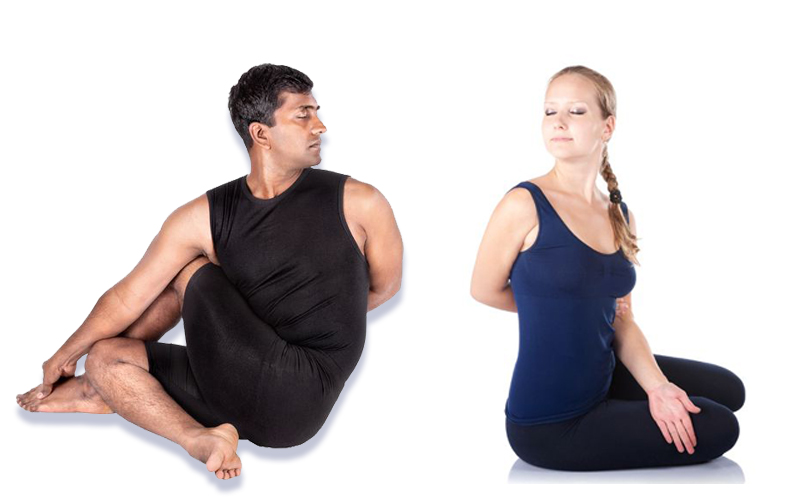NAFC NewsBlast - August 2017 | Ed 2
How to Safely Twist in Yoga, Part 1
Written by: Tammy LeBoss, The FitPro Foodie
Sources: NAFC Yoga200™, Bandha Yoga (Dr. Ray Long)
 Copyright: byheaven / 123RF Stock Photo
Copyright: byheaven / 123RF Stock Photo
The Benefits and Strategies of Twisting
“Asana is not a panacea or a cure-all. In fact, if you do it with ego or obsession, you’ll end up causing problems.” —Glenn Black. (NY Times, 2012)
When it comes to twisting in yoga, all too often most people tend to move too quickly into a pose. For many, the goal involves achieving the right shape when it should involve entering the shape safely. Can you recall the last time you attended a yoga class and the teacher cues to ‘go as far as you can’ in a Crescent Twist or a Revolved Triangle? Without considering the muscles involved, we aim for the goal of going ‘too far and too fast’ into the twist.
For many, this could be the reason for their low back pain. According to Dr. Ray Long, a yoga teacher and orthopedic surgeon:
“Many of us are (already) primed for low-back pain in general. For starters, as we age, it’s estimated that a whopping 90 percent of Americans develop degenerative disk disease, a condition in which the intervertebral disks dry out and lose height. This can lead to stiffness and low-back pain, which tend to worsen over time. Then, there’s the fact that somewhere around 40 to 75 percent of the population has some type of asymptomatic (painless) herniated disk. These disk deficiencies limit the spine’s mobility, which can make twisting—a movement that demands both agility and spinal flexibility—potentially more painful.”
However, when done properly, twists have the potential to help our low back feel great. Benefits of twisting also include:
- Opens the spine, chest, and back
- Strengthens and tone abdominal core and back muscles
- May aid in detoxification and digestion
- Increases blood flow and oxygen
- Prepares the body for deeper inversions and backbends
- May help to counteract degenerative disc disease
Prevent low back pain by understanding the anatomy of twists. Cue students to support the action with proper muscular engagement, and apply an understanding of internal and external levers.
Regarding the use of levers, NAFC Yoga200™ Interactive adds,
“There are 2 ways the body twists: Internal leverage- are the muscles of the body that we use to take our body into a specific range of motion. The transverse abs and oblique muscles function as the primary internal levers in a twist. External levers are forces that assist in taking a range of motion deeper, beyond the range of the internal levers. For example, in a chair twist, the external leverage of the arm pressing against the thigh and the hands pressing together generate energy to twist the body deeper into the pose.”
Pro Tips: Instructors can help students fully realize their full range-of-motion using their muscular structure, or internal lever. And then once that is achieved, add depth to the twist using external leverage.
Have fun making the experience a gradual process. For optimal safety, cue them to twist using muscles first and then deepen the twist by using an outside leverage. Also, learn more about proper warm-ups, cool-downs and safe and gentle transitions.
Written by: Tammy LeBoss, The FitPro Foodie

